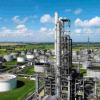I have been assigned to evaluate "Slop Oil treatment" in one of the units within the plant,there is a boiler/fired heater wich operates on LNG. So what I'm asking for is ideas on how to calculate the heating values, efficincy and everything else involved in "Sizing".......pls help
Engineer in training

 FB
FB











